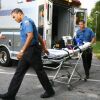Editor’s note: A question posted on asked, “Which artery will you choose for taking pulse in an emergency situation? Why?” EMT Ross Cohen gave his opinion on the topic. Read Cohen’s response and review a set of FAQs about anatomical landmarks for finding the radial pulse, brachial pulse and carotid pulse.
By Ross Cohen
There are many things in medicine that are merely a matter of preference or style. How to check a patient’s pulse is not one of those things. It’s a clear enough choice, a logical decision with a right answer and a wrong answer that dictate what the standard operating procedure should be, and I would correct any trainee I was precepting who did otherwise.
Radial artery pulse check
In a conscious adult, the radial artery is the preferred pulse point for a number of reasons:
- It’s less invasive. Before you put your hands on someone’s neck, you need to establish trust and rapport. It’s awfully disquieting and just a bit awkward to assess a carotid pulse while talking to someone. They’re already under considerable stress, so reaching out and putting a hand near their throat doesn’t help ... it’s downright alarming. Reaching for the femoral artery on the inner thigh, doubly so.
- As a general rule, you should always choose the least aggressive, least invasive, and least distressing option that accomplishes the task before moving on to the more aggressive choices.
- If they’re conscious and upright, I already know they have a carotid pulse. I don’t know the rate, rhythm, or quality, but I definitely know they have one. Those unknowns can all be learned from the radial.
- In nearly all cases, the conscious adult has a palpable pulse in their radial arteries that is not materially different than the carotid. In the unusual cases where the radial pulse was not palpable, it can tell you something relevant to your assessment.
- A person with a radial pulse has a systolic blood pressure of at least 80. If you went right for the carotid, you wouldn’t know that, only that the systolic pressure is at least 60. You would therefore learn more in the same amount of time using the radial. Better to start at the radial and switch to the carotid in the 1 or 2 out of 1000 cases where the conscious adult with no obvious arm circulation issues lacked a radial pulse.
- It is easier to maintain contact with a person’s wrist for an extended period than it is to keep your hand on their neck. There are a variety of circumstances where you might wish to do this. If they have an irregular heart rate, ensuring accuracy demands more time. If the pulse is bounding and you’re trying to calm them down, you may opt for an extended or more frequent pulse assessment, at least for rhythm and quality if not rate.
Carotid artery pulse check
In an unconscious/unresponsive adult, the preferred pulse point is the carotid artery. There are several reasons for this, some of which are complementary to those of the conscious patient:
- Unlike a conscious patient, the chief question we’re trying to answer when checking the pulse is if they have one. Someone who’s awake and talking obviously does, but that can’t be assumed in an unconscious person, so it makes sense to go for the strongest point first. The absence of a pulse at any other point would not indicate the absence of a heartbeat, only that it isn’t strong enough to reach those more distal points.
- Unlike a conscious patient, we aren’t concerned with alarming them or building rapport, so there’s no downside to going right to the most reliable pulse point.
- An unconscious person is at greater risk of an immediately life-threatening situation, so a more aggressive approach is justified.
There are advantages and disadvantages to each method of checking a pulse, and some are more relevant in some situations than others. With any medical procedure, the benefits and efficacy of different options must be weighed against their risks. The level of invasiveness, ease or difficulty and necessity of frequent or extended checks, the emotional effect and the level of urgency must all be considered. There’s not much to be gained from initially checking the carotid pulse of a conscious adult in most circumstances, but there are several downsides noted above. Conversely, there are no downsides to going right to the carotid on an unconscious adult.
Absent special circumstances, conscious adults should get a radial pulse check and unconscious adults should get a carotid check.
SA���ʴ�ý
About the author
Ross Cohen is an EMT and publisher of Quora’s “Political Clarity, Demystifying U.S. Politics.”
This article was originally posted Dec. 8, 2014. It has been updated.














